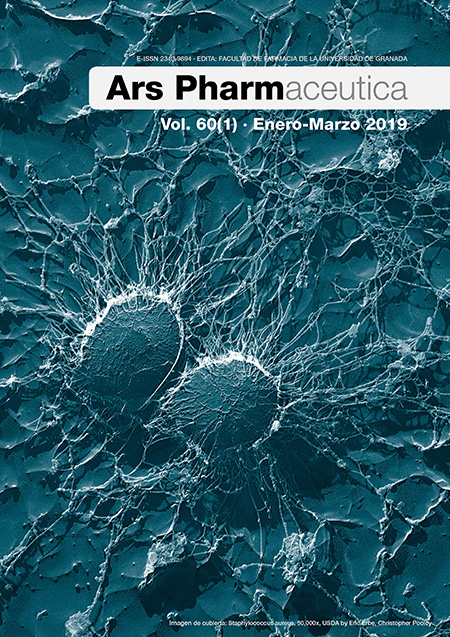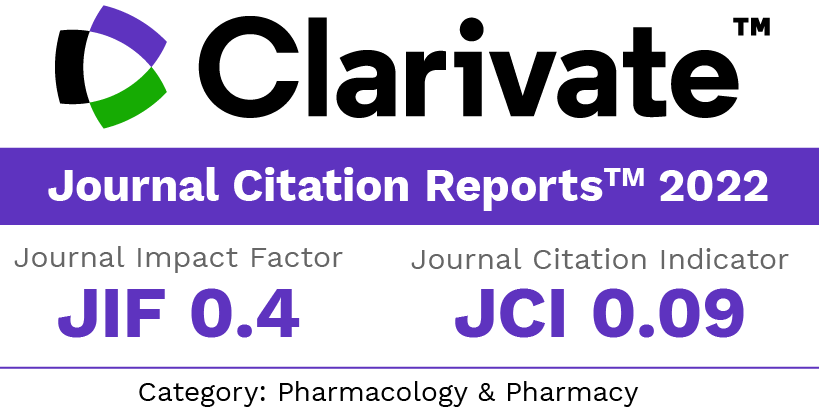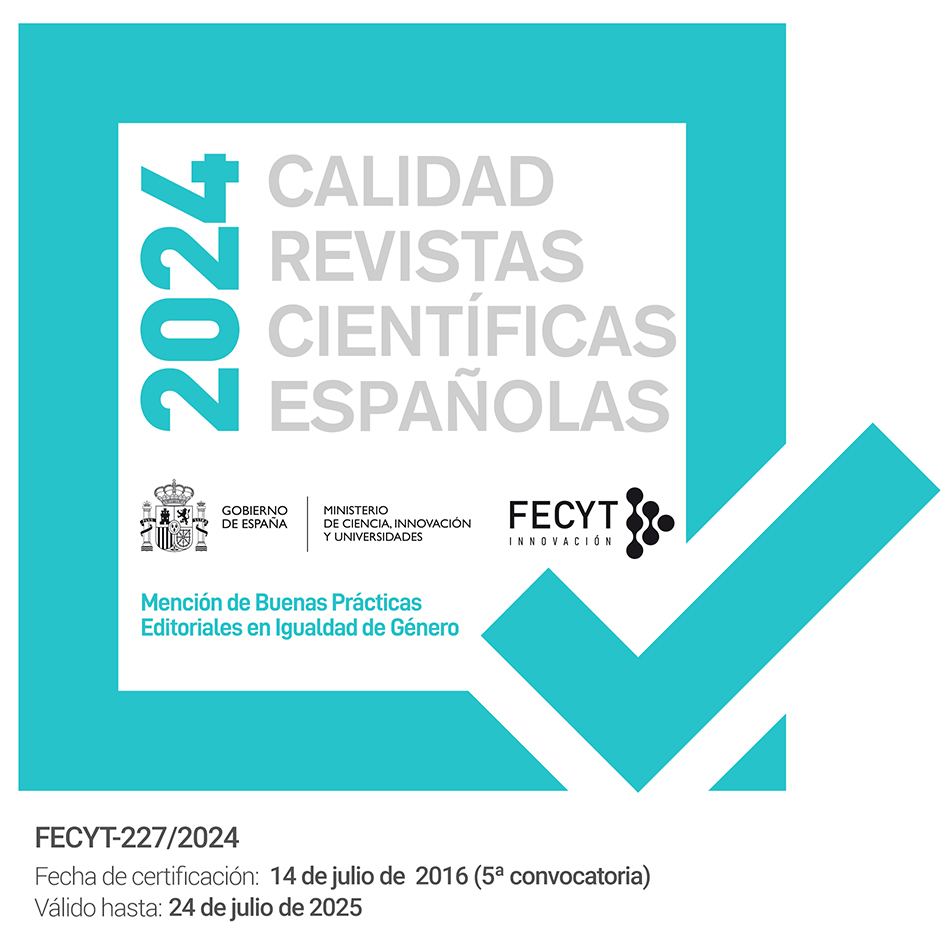Characterization of potent antidiabetic compounds from Costus pictus D. Don found in Assam, India using in vitro in vivo methods
DOI:
https://doi.org/10.30827/ars.v60i1.7692Keywords:
Costus pictus, antidiabetic activity, trihydroxyflavanoneAbstract
Objective: Costus pictus D. Don is a traditionally used plant in Naojan area of Golaghat district of Assam, India specifically for treating diabetes. Six compounds were isolated from standardized methanolic extract of the aerial parts (MECP). The prime objective was to select most potent antidiabetic compounds among the isolated compounds viz. F67, F12, F16, F3032, F37 & F48 by using in vitro and in vivo methods.
Methods: Isolated compounds were subjected to initial screening by in vitro α-amylase inhibition activity assay using iodine-starch and DNSA (3,5-dinitrosalicylic acid) methods. Compounds depicting promising in vitro activity were selected for in vivo Streptozotocin (STZ) induced antidiabetic screening activity. Then based on the in vivo results, most potent compounds were selected for instrumental characterization by Q-TOF ESI-MS, 1HNMR, 13CNMR & FTIR.
Results: Amongst the six compounds isolated from MECP, three compounds viz. F12, F16 & F48 showed potent in vitro activity. They were subsequently subjected to evaluation of the antidiabetic activity in vivo by oral administration, at dose of 10, 20 & 50 mg/kg body weight respectively, using Wister rat (120-150 g) and Glibenclamide (10mg/k body weight) as standard. Two compounds, F12 and F48 at dose of 50 mg/kg body weight, reversed STZ induced diabetic parameters (increased blood glucose level, altered plasma profile and histoarchitecture of the pancreatic and hepatic cells) with statistical significance (P<0.05), that was comparable with the standard. Hence, instrumental characterization by Q-TOF ESI-MS, 1HNMR, 13CNMR & FTIR of compounds F12 and F48 isolated from MECP was carried out which established their identity as (3,5,7-Trihydroxy-3’-hydroxy-4’-methoxy) flavanone or [3,5,7-Trihydroxy-2-(3’-hydroxy-4’-methoxy phenyl)-2,3-dihydrochromen-4-one] and 3,5,8-trihydroxy-7-methoxy-2-phenyl-2,3-dihydrochromen-4-one or [7-methoxy-3, 5, 8 trihydroxy flavanone] respectively.
Conclusion: The study culminated in elucidation of two flavanones as most potent compounds in exhibiting antidiabetic activities. The findings were thus successful in validating the traditional practices in Golaghat district of Assam, India, associated with the use of Costus pictus D. Don in the treatment of diabetes.
Downloads
References
Rastogi RP, Mehrotra BN. Compandium of Indian Medicinal Plants. New Delhi: CDRI, Lucknow and Institute of Science Communication; 1999. p. 204, 215, 224.
Jiang BQ. Banksea speciosa China: König in Retzius. J. Flora of China. 2001; (24): 321.
Sukhdev SH, Dev D, Rakesh KV. Compendium of Medicinal and Aromatic Plants, ASIA, Vol 2. New Delhi: United Nations Industrial Development Organization and the International Centre for Science and High Technology; 2006. p. 58-192.
Bhuyan B, Chetia C. An ethnomedicinal study focusing the genus Costus in Assam with emphasis on traditional medicine. J Med Plants Stud. 2018; 6(2): 178-188.
Bhuyan B, Baishya K. Ethno medicinal value of various plants used in the preparation of traditional rice beer by different tribes of Assam, India. Drug invent today. 2013; (5):335-341.
Bhuyan B, Nath LK, Rajak P. An Ethnopharmacological Survey of Plants Located In Indo Chinese Border of NER, India. Am J Pharm Tech Res. 2014; 4(1):130-137.
Miller GI. Use of dinitrosalicylicacid reagent for determination of reducing sugar. Anal Chem. 1959; (31):426-428.
Wickramaratne MN, Punchihewa JC, Wickramaratne DBM. In-vitro α -amylase inhibitory activity of the leaf extracts of Adenanthera pavonina, BMC Compl Alter Med. 2016; (16):466-472. doi.org/10.1186/s12906-016-1452-y
Xiao Z, Storms R, Tsang A. A quantitative starch iodine method for measuring α -amylase and glucoamylase activities. Anal Biochem. 2006; 351(1):146-148.
Young DS. Effects of Drugs on Clinical Laboratory Tests. 4th ed. Washington DC: AACC Press; 1995.
Fossati P, Prencipe L. Serum triglycerides determined colorimetrically with an enzyme that produces hydrogen peroxide. Clin Chem. 1982; (28):2077-80.
Reitman S, Frankel S. A colorimetric method for the determination of serum glutamic oxalacetic and glutamic pyruvic transaminases. Am J Clin Pathol. 1957; 28(1):56-63.
Kind PRH, King EJ. Estimation of plasma phosphatase by determination of hydrolysed phenol with amino-antipyrine. J Clin Pathol. 1954; 7(4):322–326.
Carson Fl, Hladik, C. Histotechnology: A Self-instructional Text. 3rd ed. Chicago: ASCP Press, 2009.
Hopwood D. Fixation and fixatives. In: Bancroft J, Stevens A, editors. Theory and practice of histological techniques. New York: Churchill Livingstone, 1996. p. 12-23.
Additional Files
Published
How to Cite
Issue
Section
License
Copyright (c) 2019 Biman Bhuyan, Dipak Chetia

This work is licensed under a Creative Commons Attribution-NonCommercial-ShareAlike 4.0 International License.
The articles, which are published in this journal, are subject to the following terms in relation to the rights of patrimonial or exploitation:
- The authors will keep their copyright and guarantee to the journal the right of first publication of their work, which will be distributed with a Creative Commons BY-NC-SA 4.0 license that allows third parties to reuse the work whenever its author, quote the original source and do not make commercial use of it.
b. The authors may adopt other non-exclusive licensing agreements for the distribution of the published version of the work (e.g., deposit it in an institutional telematic file or publish it in a monographic volume) provided that the original source of its publication is indicated.
c. Authors are allowed and advised to disseminate their work through the Internet (e.g. in institutional repositories or on their website) before and during the submission process, which can produce interesting exchanges and increase citations of the published work. (See The effect of open access).























